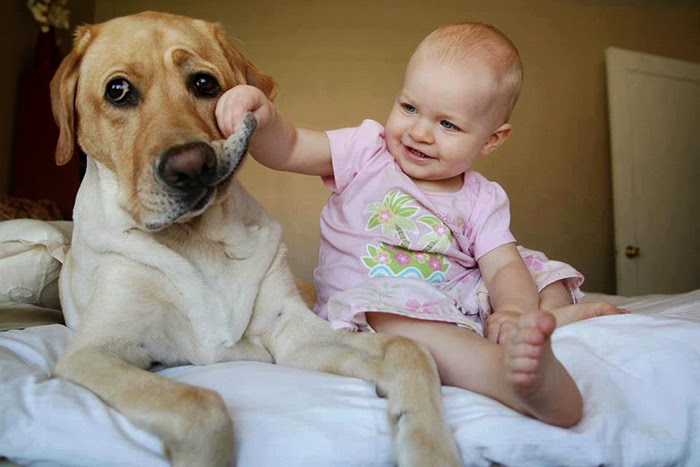Guest Blog by The Pawfectionist
You hear over and over again, "Supervise your dogs around your children", from animal professionals as well as the media. So why is this not stopping the incidence of bites? It is one thing to supervise, but to understand what you are seeing is something completely different. Herein lies the issue. We are all told to supervise but not taught how to recognise the potential threat and prevent a bite.
Like people, dogs have many different ways of communicating through body language. Sometimes these signals can be seemingly insignificant to the untrained eye. We are attuned to human body language because we are the same species. We are taught human body language and have an innate understanding from the moment we open our eyes. Dogs are not humans and while some of the body language is similar, it is quite naive to think that any person could recognise and interpret all the signals a dog projects at any moment. Perhaps it is our history with dogs that leads us to have an inflated sense of understanding of our four-legged companion. After all, we don't pretend to understand other less domesticated animals such as foxes, kangaroos or possums. We just allow them the space they need because we don't know nor can we predict how they will react.
Parents need to understand that dogs, as with all other animals, have a non-domesticated history and will react to protect themselves as you would as a human. In order to prevent bite incidents, parents need to learn to read dog body language and act accordingly in each situation.
Here are a few tips to help you supervise your children with dogs a little more effectively.

Play Area
Keep children and dogs in an open area where the dog has the option to move away if it feels uncomfortable. If a dog is relaxing near a couch or in a corner, make sure the children are kept away. Dogs that feel cornered are more likely to exhibit a fight response as they are unable to flee the situation should they need to.

General Body Language
Keep it loose. Dog that have a loose tail, back, eyes and mouth are exhibiting a more relaxed body posture. Dogs that have a tight mouth and stiff body posture are telling you and your children that they are uncomfortable and you must step in by calling the dog away or telling the children to give the dog space.
Stress Signals
If your dog is showing these signals, ask the children to give the dog space.

Children Body Language
If the children are behaving inapproriately or showing intimidating body language the dog can become stressed. An innocent example of this was just yesterday at the park with my dog Luke. There were children at the park who wanted to do tricks with Luke. I showed them bang (play dead). A simple quiet "bang" with a finger point from a distance was Luke's command. The command given by the child was a loud guttural "BANG" with a finger point and intimidating body posture close to Luke's face. Luke flinched from this and it was clear that, while he did perform the bang, he was uncomfortable and I took steps to lessen the interaction with Luke to give him the space he needed. While I don't think Luke would have bitten the child, I would not take this risk. Other behaviours such as pulling at a dogs ears or tail or sitting or lying on a dog is not appropriate. If you wouldn't do it to a human, don't do it to a dog. If a child is doing any of these it is important to cease interaction immediately until the child is taught to play nicely.
Growling and Showing of Teeth
While I would hope most of you would recognise these two signals, it is important to note them in this list. Many people will discipline a dog for growling or showing "aggression" toward a child but these signals are important as they are the signals that are used in place of a bite and should not be discouraged at any point. If you dog is showing either of these signs, you need to remove the dog from the situation and give them some space to relax away from the children.
As well as recognising and responding to your dog's body language, it is also important to teach these same things to your child so they can keep themselves safe. For more information on safety with children and dogs, please read our original blog Living Harmoniously with Kids and Dogs.
Should you have any questions or concerns about your situation at home, please feel free to contact our guest blogger, The Pawfectionist, by visiting their website.
What is Dogshare?
Dogshare allows like-minded and loving dog owners from nearby neighbourhoods to connect and share doggie duties - from play dates, to backyard sharing, walking and holiday minding.